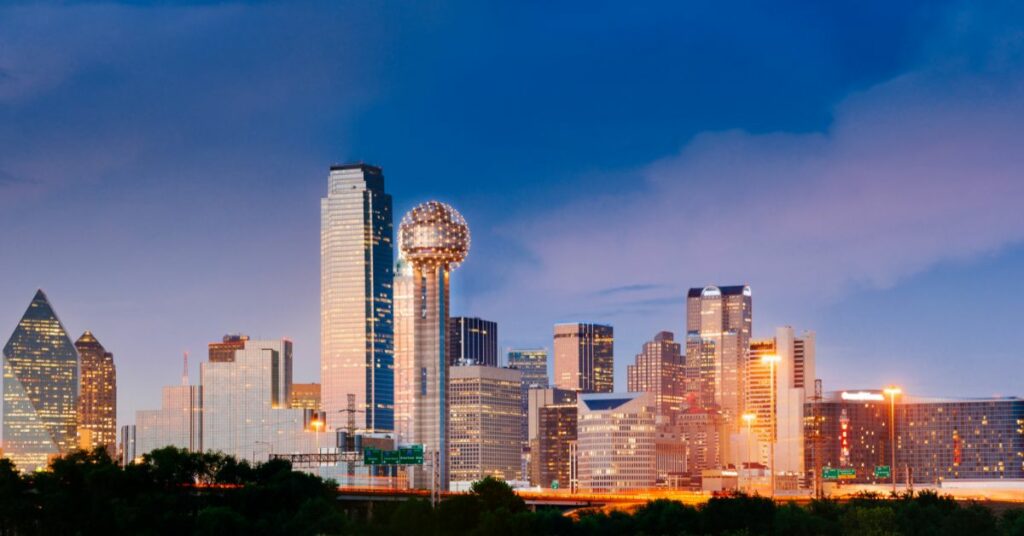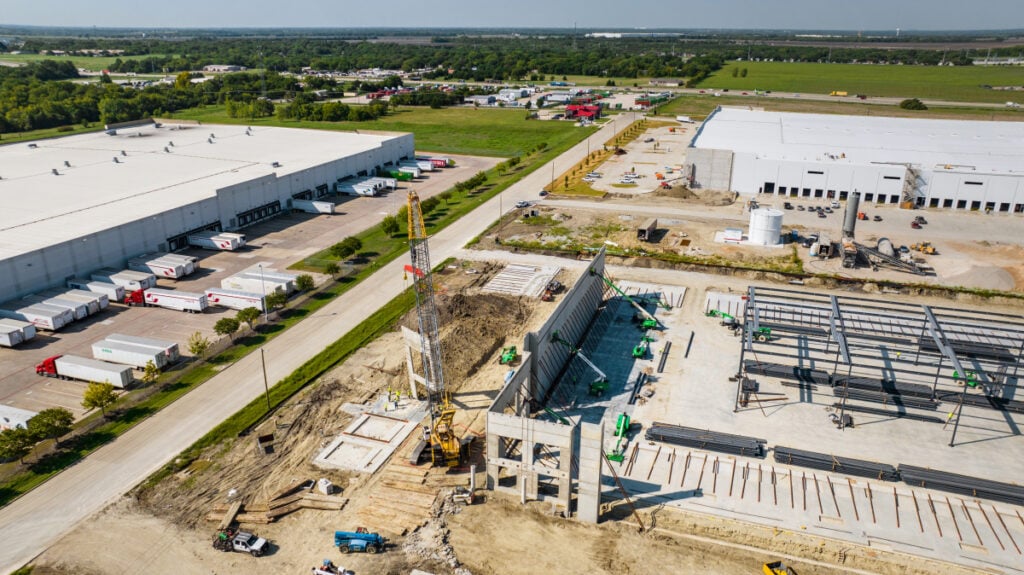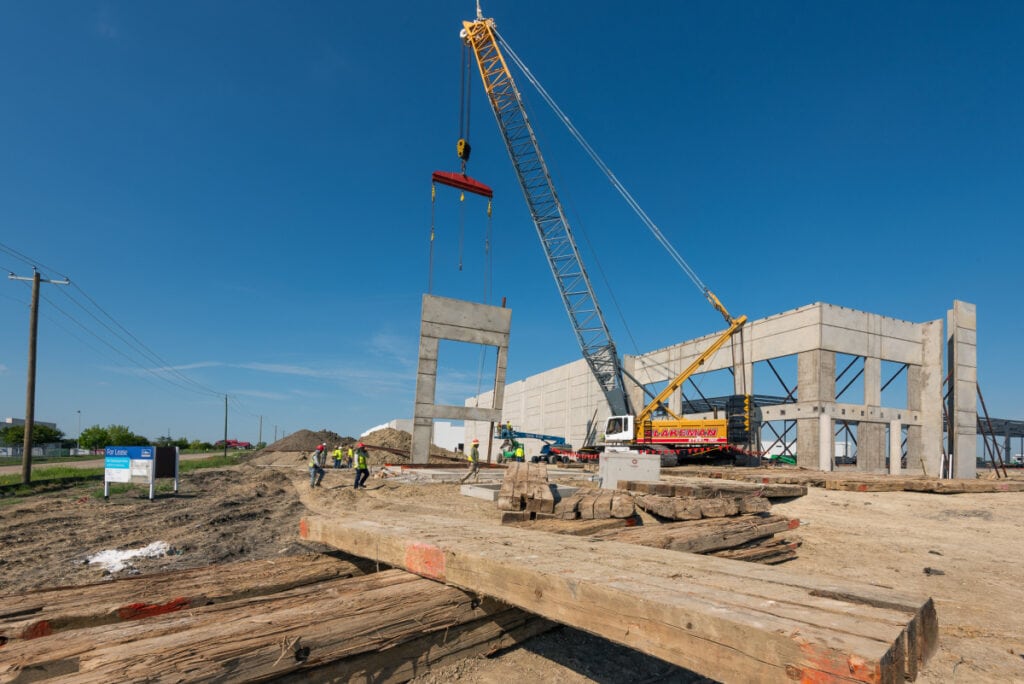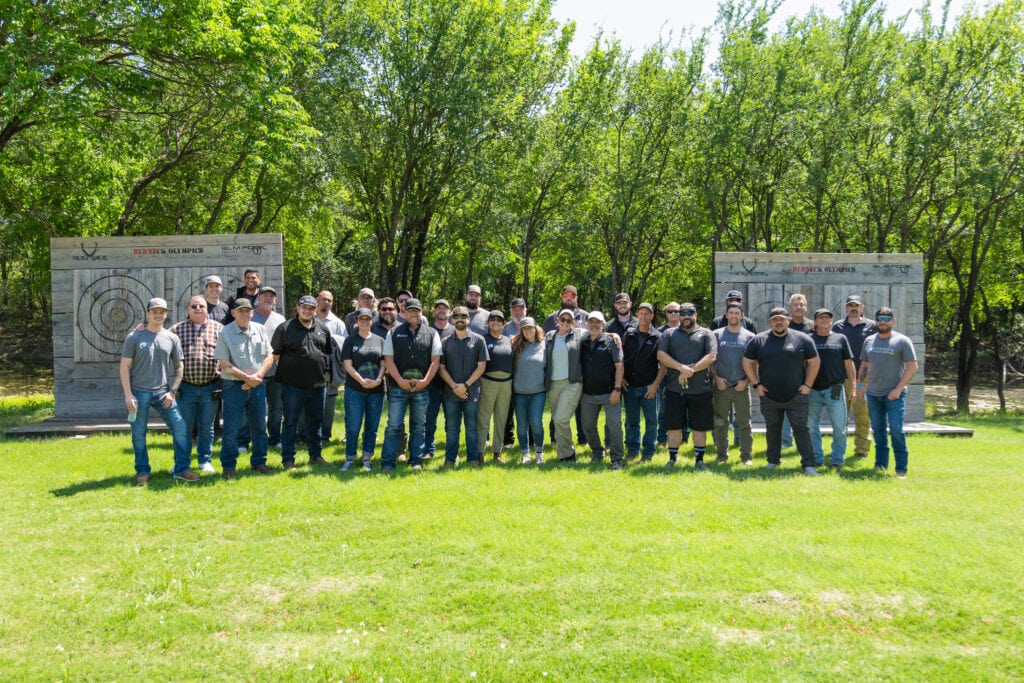In the ever-evolving landscape of the industrial sector, Texas stands out as a beacon of adaptability and potential. From shifts in facility preferences to the ripple effects of global events, the industrial market continually recalibrates to meet and anticipate tomorrow’s needs.
This article delves into the nuances of this dynamic Texas market, shedding light on its current state, challenges, and promising opportunities. Join us as we journey through the multifaceted world of the Texas industrial market, from trends and pandemic impacts to the untapped potentials waiting to be harnessed.
Key Takeaways
- Central Texas is becoming a key manufacturing hub due to its strategic location and robust infrastructure, offering an alternative to overseas production.
- A global trend towards local production is fueling a manufacturing renaissance in Central Texas, with the region’s resources and infrastructure attracting top-tier talent and driving innovation.
- Despite being overshadowed by neighboring regions, Central Texas is seeing a rapid expansion in its industrial sector with a notable demand for sizable industrial spaces and new constructions.
- Adjustments in facility designs towards compact, efficient structures are noted in the industrial market, reflecting a shift in market preferences and preparing for the multifaceted requirements of the DFW and Central Texas markets.
- Early engagement with contractors is crucial to handle extended lead times and financial strain, ensuring smooth project implementation.
- Building trust is essential for sustainable growth, with positive experiences reshaping market dynamics and fostering new alliances.
- The shift towards more compact, efficient facility designs and a steady growth trajectory anticipated for 2024 demonstrate the adaptability and enduring potential of the DFW and Central Texas industrial markets.
Central Texas Industrial Market Shift
Central Texas finds itself at the nexus of transformation. Historically, the global market depended heavily on intricate supply chains. However, recent global logistical challenges, from trade wars to transportation bottlenecks, have highlighted the vulnerabilities of such extended dependencies. Simultaneously, the U.S., in its drive to rejuvenate its manufacturing sector, has been emphasizing the need to bring production closer to home.
Central Texas emerges as a focal point of change in this evolving landscape. The region’s strategic location, robust infrastructure, and skilled workforce make it an attractive hub for manufacturers looking to establish or relocate their operations. The shift isn’t just about geography; it’s also ideological. Once deemed cost-effective and efficient, the over-reliance on overseas production has limitations, mainly when global disruptions occur. Natural disasters, political tensions, or pandemics can all stall production lines, leading to massive setbacks for businesses.
Central Texas has stepped up to recognize these challenges and the potential pitfalls of over-dependence on foreign manufacturing. The region has been proactively positioning itself as a viable alternative, ready to host and support the needs of modern manufacturers. As a result, we’re witnessing a surge in domestic manufacturing activities in the area. Companies increasingly view Central Texas as a location and strategic partner in creating resilient, efficient, and sustainable supply chains.

Manufacturing’s Resurgence and Its Impact
Central Texas is experiencing a renaissance in the manufacturing sector, a phenomenon fueled by a broader global trend leaning towards local production. Over the past decade, the appeal of offshore manufacturing, driven by lower costs, has dominated industry decisions. However, recent challenges on the global stage have prompted a reevaluation of this model, placing a renewed emphasis on local production capabilities.
Central Texas has emerged as a prime destination for this manufacturing resurgence with its unique blend of resources, infrastructure, and strategic location. The region has numerous primary institutions, research hubs, and educational establishments that feed into the industrial ecosystem. Their presence attracts top-tier talent and drives innovation, leading to more efficient and sustainable manufacturing practices.
Further enhancing Central Texas’s appeal is the thriving ecosystem of supporting businesses. The growth of manufacturing isn’t just about the primary producers; it’s also about the myriad of vendors, subcontractors, and ancillary service providers that support them. From raw material suppliers to logistics companies, the region has seen an uptick in businesses that cater to the manufacturing sector. One tangible manifestation of this burgeoning activity is increased tilt wall industrial construction projects. These buildings, known for their speed of construction and durability, are particularly suited for manufacturing. The rising number of such projects, especially in the mid to small-sized range, indicates growth and diversification of the manufacturing base, accommodating businesses of various scales.
Inventory and Construction Dynamics
Central Texas, often overshadowed by its more illustrious neighbors, is carving a distinct niche in the industrial domain. A cursory look at the demand dynamics in the region paints a compelling picture: there’s an acute shortage of industrial inventory. In economic terms, such a shortage usually signals a robust demand—precisely the case here.
Today, businesses are clamoring for sizable industrial spaces, with a particular demand for buildings that span anywhere from 175,000 to 600,000 square feet. These structures, vital for everything from large-scale manufacturing to warehousing, are in short supply. To put things in perspective, Central Texas boasts an industrial footprint of approximately 12 million square feet. While this might seem substantial at first glance, it’s a drop in the ocean when juxtaposed with industrial behemoths like the Dallas-Fort Worth area. The sheer volume of industrial space is staggering, dwarfing Central Texas’s offering.
However, numbers don’t tell the entire story. While Central Texas might need to catch up in terms of absolute space, the pace of its growth is experiencing a rapid expansion in its industrial sector, with new constructions cropping up and older spaces being repurposed or expanded. This growth rate, coupled with the rising demand, highlights Central Texas’s evolving role in the broader industrial tapestry of the state. It’s no longer just an adjunct to the more prominent hubs but is emerging as a significant player in its own right.
Dallas Industrial Insights
The Dallas industrial market is a testament to the resilience and dynamism inherent in Texas’s economic fabric. Occupying a significant portion of the state’s industrial realm, Dallas melds tradition with innovation, ensuring it remains at the forefront of the sector’s evolution.
Central to Dallas’s industrial prowess is its projected achievement of approximately $146 million in industrial projects this year. This figure isn’t just a marker of financial success; it embodies the city’s relentless drive, capacity to attract diverse businesses, and ability to continuously innovate and adapt to changing market conditions. This robust performance juxtaposes a complex web of opportunities and challenges defining the city’s industrial landscape.

E-Commerce Dynamics
E-commerce has transformed the industrial scene in Dallas, especially in the aftermath of the pandemic. With a significant client base in e-commerce, there was a noticeable escalation in e-commerce-driven projects during and post-pandemic. This upswing wasn’t without its challenges, as seen in the following brief market correction.
The initial post-pandemic euphoria led many to believe in perpetual growth, leading to a rush of projects. However, a reality check ensued, with some projects being halted midway. The silver lining was seen towards the end of 2022 when these paused projects resumed, indicating an adaptive and responsive market. Especially for larger e-commerce clients who had rapidly scaled operations during the pandemic, this period served as a phase of recalibration and alignment with the market’s true potential.
Market Corrections
While cyclical variations are expected, the market’s correction phase was a testament to its dynamic nature. The pattern of larger corporations making adjustments post-rapid expansion could mirror what smaller entities might experience soon.
However, it’s essential to remember that, despite these adjustments, the Dallas industrial market remains robust. And while some significant projects are ongoing, there’s a noticeable increase in smaller undertakings. This is exemplified by the growing number of remodels and spec suites. In anticipation of future tenants, developers are laying the groundwork now, a clear sign of optimism and forward-thinking.
Capital and Infrastructure
With its thriving commercial and industrial expansion, Texas is at the juncture of capital and infrastructure dilemmas. In this swiftly evolving environment, the availability and cost of capital have emerged as a paramount concern for numerous developers across the state.
Currently, capital is not merely hard to come by but also steeply-priced. While the prominent players in the market can access their capital reserves, ensuring fluid operations and project implementation, the smaller to mid-sized developers confront a contrasting scenario. For these groups, contending with the towering capital expenses often translates to the pressing necessity to garner funds or reach deep into their reserves.
Infrastructure stands as another critical factor influencing the state’s expansion trajectory. Texas’s infrastructure faces complex challenges, particularly water, wastewater, and power. The provision and adaptability of these essential amenities are under stress, and the impact resonates deeply with developers and businesses statewide. These infrastructural hindrances and the hefty capital expenditures have shaped the state’s development rhythm.
Yet, amidst these hurdles, a glimmer of optimism persists. Dialogues with stakeholders across Texas suggest a rising appetite for office spaces, indicating potential durability and concealed growth prospects within the state’s commercial sector. This emphasizes Texas’s ability to pivot and forecast a bright horizon, contingent on resolving these fundamental challenges.

Hurdles to Central Texas Development
Two primary drivers have challenged Central Texas’s growth momentum: the cost of capital and the region’s infrastructure.
Currently, capital is expensive. This heightened capital cost impacts developers differently. Larger entities with substantial capital reserves can sometimes navigate these challenges more smoothly. For instance, they might accept a lift station for commercial property or utilize their existing capital without borrowing more. In contrast, smaller to mid-sized developers often face steeper hurdles. These developers, typically reliant on raising capital or investing their own money, have experienced a pronounced slowdown across all markets. Their activities might be proceeding but at a discernibly slower tempo.
Interestingly, despite these challenges, there’s a silver lining. Conversations with regional architects reveal an uptick in office space demand, hinting at a potential resilience and the promise of growth in Central Texas’s commercial landscape.
Pandemic Impact
The pandemic’s ripple effects have permeated various sectors, and the construction and development industry is no exception. From material delays to the amplified importance of early contractor engagement, we’ve observed several transformative shifts in how businesses approach projects.
Beyond the tangible challenges like material scarcities, the pandemic has brought about a shift in industry mindsets and strategic planning. Businesses have had to embrace adaptability as a core tenet, with contingency planning becoming paramount. There’s been an increased emphasis on sourcing locally, reducing dependencies on global supply chains that proved fragile during the crisis.
Moreover, digital solutions, from virtual site visits to digital collaboration platforms, have gained traction, highlighting the importance of technology in ensuring continuity and efficiency. While the pandemic posed significant challenges, it also served as a catalyst, pushing the construction and development industry to innovate, rethink old methodologies, and embrace a future-ready approach.
Material Delays
The pandemic-induced disruptions in global supply chains have left an indelible mark on the pace and predictability of construction projects. Before these disturbances, the standard window for project completion, fueled by reliable access to essential materials, ranged from two to three months.
But as the world grappled with lockdowns, shipping challenges, and production halts, this window expanded considerably. Jobs that once took a few months now require five to six months if not longer, underscoring the sheer magnitude of the material-related challenges at play.
The crux of this delay lies in the unpredictability and fragility of the global supply chain exposed by the pandemic. Key materials, from basic construction essentials to specialized components, have seen erratic availability patterns. Beyond the availability, price volatility has also added complexity to project planning and execution. Contractors, developers, and clients have all felt the ripple effects of these challenges, recalibrating expectations, budgets, and timelines to align with this new reality.
Importance of Early Engagement
Early engagement with contractors has become paramount to navigate these extended lead times and ensure projects can handle the necessary delays and financial strain. Engaging with general contractors at the project’s inception—be it us or any other firm—ensures clarity and awareness regarding potential roadblocks, especially material delays.
Such understanding is critical when planning to launch a facility or initiate revenue streams from a new development. This foresight is necessary to maintain business operations. Recognizing this, we have proactively advised our clients to factor in these longer lead times to ensure they aren’t allocating resources or expending capital inefficiently.
Central Texas Potential
The growth trajectory of the Central Texas region, particularly in its industrial sectors, is undeniable. As businesses and developers look toward the future, two distinct themes emerge: the rise of ground-up projects and the need to cement trust in this burgeoning market.
Central Texas’s strategic positioning comes to the fore amid the broader regional growth. The region’s skilled workforce, favorable regulatory environment, and logistical advantages are fertile grounds for businesses to flourish.
Additionally, the collaborative spirit among stakeholders, from local government entities to private enterprises, amplifies the region’s attractiveness. While ground-up projects symbolize tangible growth and infrastructural development, the undercurrent of trust being built underscores a more profound evolution: Central Texas isn’t just growing in size and scope and maturing into a more interconnected and collaborative industrial ecosystem.
Ground-Up Projects
With its blend of vibrant communities and robust economic foundations, Central Texas is poised for an exciting phase characterized by ground-up industrial projects. These ventures represent more than bricks and mortar; they symbolize the region’s growth, adaptability, and forward momentum.
For many industry players, including us, the allure of initiating such a project in the region is a blend of exhilaration and novelty. While we stand on the precipice of launching our first ground-up project in Georgetown, the broader implications are profound.
This endeavor isn’t just about our ambitions but serves as an indicator to local stakeholders of the changing dynamics of the industrial landscape. The successes of these early ventures can catalyze a wave of similar projects, underscoring Central Texas’s role as a hub for industrial innovation.

Building Trust in a Maturing Market
In any evolving market, trust becomes the cornerstone of sustainable growth. Central Texas, in its phase of industrial maturation, is no different. Over the years, local entities have fostered relationships with key industry players, forming trust and mutual growth bonds.
Venturing away from these established affiliations can take time and effort. Much like savoring a new dish for the first time, there’s both curiosity and apprehension. However, a single positive experience can reshape perceptions and foster new alliances. Our foray into industrial Tenant Improvements (TIs) is a testament to this.
Client feedback and continued interest underline a fundamental truth: delivering excellence and consistent value can reshape market dynamics. At the heart of Gordon Highlander’s ethos is a commitment to this excellence, ensuring that we remain a trusted partner for many as the market grows and diversifies.
Market Adaptation
The vitality of the Dallas-Fort Worth (DFW) and Central Texas industrial sectors demonstrates its versatility, mirroring changes in facility choices and anticipated growth trajectories. As companies and stakeholders decipher these movements, it becomes clear that the market’s progression is a reaction to existing challenges and a tactical preparation for impending opportunities.
Shifting Facility Sizes
In this ever-evolving domain, the industrial market experiences continuous adaptations and refinements. Recent trends suggest certain market adjustments, signaling a potential deceleration. However, these shifts are not merely about momentum; they suggest a more profound change in facility design.
Gone are the days of vast facilities reigning supreme. The focus has shifted towards more compact, efficient structures. These aren’t mere scaled-down variants of their predecessors but are thoughtfully crafted units designed for nimbleness.
Operating with precision, these entities are poised to address the multifaceted requirements of the DFW and Central Texas markets, reinforcing the notion that, sometimes, smaller can be mightier.
Anticipated Growth Ahead
Occasional market variations have kept the hope enveloping the DFW and Central Texas industrial spheres. As the current year winds down, there’s a tangible excitement regarding the potential increase in deal magnitudes and their regularity.
This confidence is rooted in reality, not mere conjecture. Concrete strategies for the coming years, especially in 2024, envision a steady growth trajectory. There’s no mention of stagnation or decline; the outlook is broadening.
It goes beyond mere figures or square footage. It is evidence of the enduring conviction that the DFW and Central Texas markets, with their intrinsic vigor and adaptability, are set for significant expansion.
Conclusion
Texas’ industrial market has showcased resilience and innovation in the intricate dance of supply and demand, infrastructure challenges, and evolving economic landscapes. As we’ve navigated through its various facets, it’s evident that the region is not just reacting to changes but proactively shaping its future.
The road ahead may present its challenges, but Texas remains poised to harness its potential fully with a foundation rooted in adaptability and forward-thinking. As stakeholders, businesses, and the community at large come together, the horizon promises growth, opportunity, and a bright future for the industrial heartland of Texas.

About Gordon Highlander
Gordon Highlander, headquartered in Texas, is a premier general contractor focusing on design-build and partially and fully-engineered construction solutions. With decades of legacy, we have delivered millions of square feet across diverse commercial and industrial sectors. Our expertise extends to major Texan markets, including Dallas, Austin, San Antonio, and Houston.
